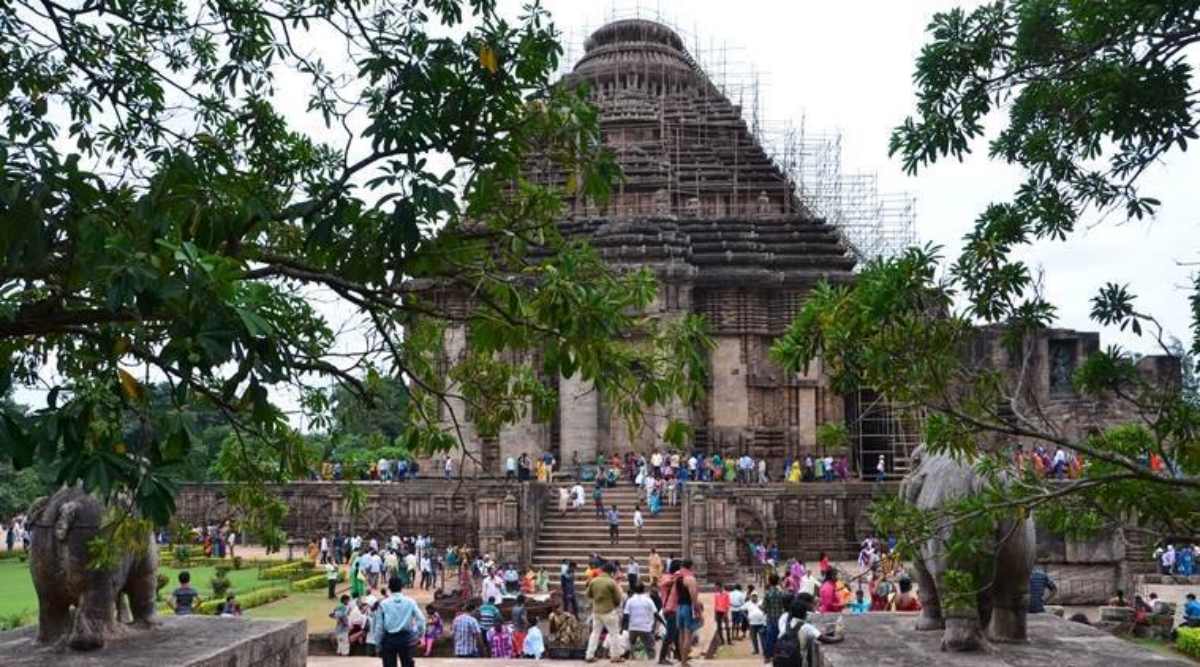January 2, 2022 3:59:22 am
 Advancing stone erosion and weathering have blunted the fineness of the carved figurines and taken their toll on the soft stone. (Express File)
Advancing stone erosion and weathering have blunted the fineness of the carved figurines and taken their toll on the soft stone. (Express File) The author of the article is Anil Dhir
Massive. Breathtaking. Magnificent. Awesome. Ancient India’s gift to world heritage. The Sun Temple of Konark is about 750 years of history and 120 years of conservation. It represents the culmination of Odisha’s temple architecture. Even in its present disrepair, it is one of the most stunning examples of religious art.
The Archaeological Survey of India insists that Konark is among the best looked after monuments; however, its conservation history is uneven to say the least.
A marvellous metaphor of time and space, the ancient temple is decaying, victim to advancing stone erosion and weathering, which have already blunted the fineness of the carved figurines and taken their toll on the soft stone. Salt action, wind, humidity, algae and fungal growth have all contributed to the damage. Fissures have appeared, stone slabs are breaking off and the figures, as they erode, have lost much of their pristine beauty.
In was in December 1900, after Lt Governor Sir John Woodburn visited the place, that efforts were taken to restore it to its grandeur. By April 1901, the archaeological Surveyor T Bloch had unearthed the mammoth structure and the sheer size and splendour of its structure and intricate carvings were once again seen.
In 1924, the Earl of Ronaldshay proclaimed the newly-revealed temple to be “one of the most stupendous buildings in India, which rears itself aloft, a pile of overwhelming grandeur even in its decay”.
More than 11 reports were prepared by different authorities in different times after this. Most of them just gathered dust. The first report, prepared by Bishan Swarup, an engineer who worked at the site from 1901-04, stated that the edifice faced collapse and had it filled up with sand. Swarup had given detailed suggestions for the further upkeep of the temple, but these were just forgotten.
The next committee, formed in 1950, was chaired by Chief Minister Biswanath Das and had on its panel C M Master, an eminent architect from Bombay. None of the recommendations was put in place.
The third committee was formed in 1953, this too under the chairmanship of Das, and the recommendation for erection of scaffolding was implemented.
In 1978, the ASI constituted the Konark Expert Committee where, for the first time, a serious view of the problem was taken. The committee was chaired by the DG of the ASI. After the collapse of five stone blocks from the main temple, structural conservation was undertaken between 1985-90. Based on this, scaffolding of some vulnerable sections was done.
In 1979, the UNESCO Experts Recommendation on Conservation of Konark was given to the Government of India. After declaring it a World heritage Site, UNESCO once again appointed a committee headed by experts Sir B M Fielden and P Beckman in 1987. They described the state of the temple as alarming and advised immediate measures.
The Italian expert Prof Ing Giorgio Croci made a Structural Analysis of the Jagamohan in 1997. The committee’s recommendations included removing the sand. One of the suggestions was to drill a hole and send endoscopic cameras to assess the state of the interior of the temple.
No one knows for sure why the Konark temple disintegrated so rapidly in such a relatively short time. Various theories abound, some scholars think that the main temple was never completed. The collapse may also have been due to bad foundation and settlement, or natural catastrophes like cyclones, lightning, earthquake.
The temple was originally nearer to the seashore and its black pagoda was visible for miles. In fact the ancient mariners’ maps used it as a navigation point. The standing corner of the tower was further recorded by James Fergusson in 1837 C.E., who estimated its height as 140 to 150 feet, and Kittoe in 1838 C.E., who estimated its height as 80 or 100 feet . This solitary remnant of the main temple fell in October 1848 due to a strong gale.
Rajendra Lal Mitra, while visiting the temple in 1868, mentioned it as only an “enormous mass of stones studded with a few peepal trees here and there”.
In 1906 large-scale plantation of casuarina and poonang trees was taken up in the direction of the sea in order to check the movement of sand-laden winds and thereby minimise their abrasive action. These tall trees were all destroyed in the super cyclone of 1999.
The authorities then planted cashew nut trees, which do not grow high and offer little protection from the sand particles carried by the wind. This has accelerated the erosion. Furthermore, the entire compound was paved with stone blocks, which stopped the natural sand percolation of rainwater, resulting in water logging of the temple every year.
Between accusations and counter-accusations, the condition of the structure continues to weaken. Acquiring a heritage tag is not sufficient in itself; it entails and imposes greater responsibility and cultural accountability. But our system in place is hardly responsive to the needs of culture.
The writer is Project Coordinator, INTACH Odisha
- The Indian Express website has been rated GREEN for its credibility and trustworthiness by Newsguard, a global service that rates news sources for their journalistic standards.

